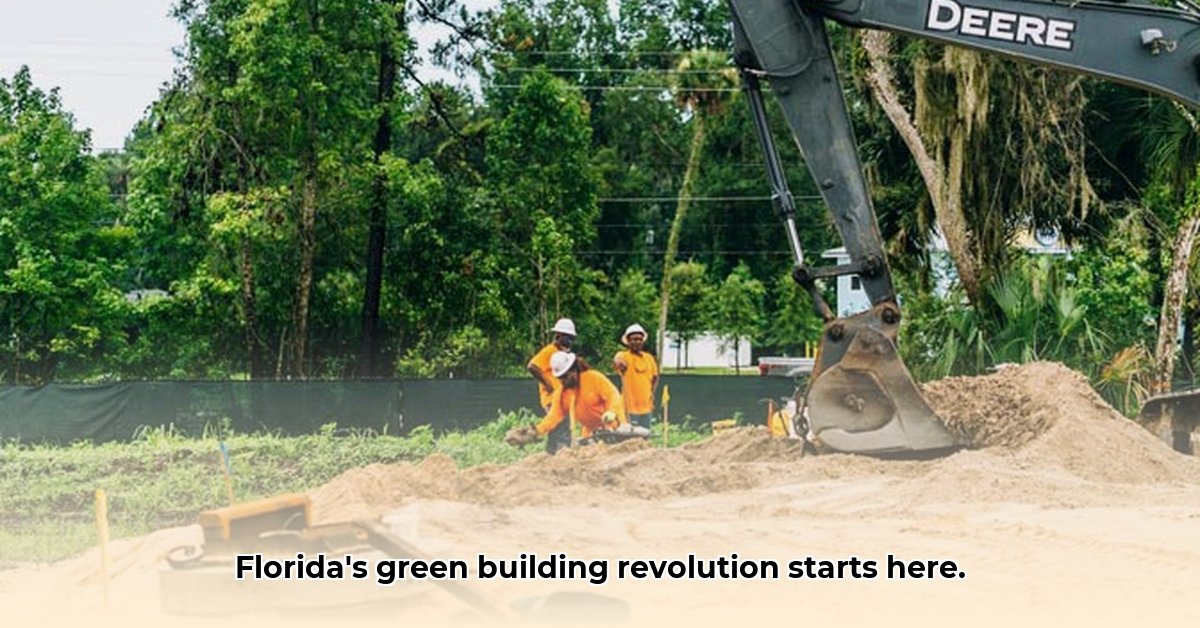
Company Overview: A 36-Year Legacy in Florida's Construction Landscape
Harty Tractor boasts a 36-year history of successful site development projects throughout Florida. Their portfolio includes a diverse range of projects, from small commercial buildings to large-scale infrastructure initiatives such as shopping centers and municipal facilities. This extensive experience positions them well to integrate sustainable practices effectively, although current data transparency needs improvement. How can Harty Tractor leverage its existing expertise to become a leader in sustainable site development in Florida? For comparison, consider the cost of equipment like tractor pricing.
Sustainability Assessment: Identifying Opportunities for Growth
While Harty Tractor's services implicitly suggest a commitment to sustainability (e.g., erosion control, environmental remediation), a quantifiable assessment of their actual environmental impact is currently unavailable. The absence of publicly available data on water conservation, waste reduction, energy efficiency, and carbon footprint presents a significant opportunity. A thorough, data-driven analysis across various project types is needed to benchmark their performance against industry best practices.
This lack of transparency also limits their ability to showcase achievements and further strengthens the need to implement a robust measurement system. How can they measure their success? Is it purely output-driven, or does it also consider the environmental implications of their work? What systems are needed to track materials, processes, and waste reduction?
A Risk Assessment Matrix: Potential Challenges
The transition to sustainable construction involves inherent challenges. Harty Tractor, like other firms, faces risks that need proactive mitigation.
| Risk Category | Likelihood | Impact | Mitigation Strategy |
|---|---|---|---|
| Regulatory Non-Compliance | Medium | High | Proactive engagement with regulatory agencies; robust internal compliance program; regular third-party audits. |
| Reputational Damage | Low | Medium | Transparent communication about sustainability efforts; active stakeholder engagement (community outreach, partnerships with environmental NGOs). |
| Increased Project Costs | Medium | Medium | Comprehensive cost-benefit analyses; exploration of grants and subsidies; innovative, cost-effective construction techniques. |
| Material Supply Chain Issues | Low | Medium | Diversified sourcing; locally sourced and sustainably produced materials; strong relationships with reliable suppliers. |
Detailed Recommendations for Actionable Improvement
To effectively embed sustainability into their operations, Harty Tractor should adopt a phased approach:
Phase 1: Foundation (Within 1 Year)
- Comprehensive Sustainability Audit: Conduct a thorough audit to establish a baseline for future improvement. This includes assessing current practices, identifying gaps, and setting measurable targets. (Estimated cost: $5,000 - $15,000; potential ROI: 10% - 15% through waste reduction).
- Data Collection System: Implement a robust system to track key performance indicators (KPIs) like water usage, waste diversion rates, and energy consumption.
- Transparent Marketing: Update marketing materials to highlight existing sustainable practices with concrete data instead of vague statements.
Phase 2: Growth (1-3 Years)
- Formal Sustainability Policy: Develop and publicly release a comprehensive policy with specific, measurable, achievable, relevant, and time-bound (SMART) goals. Establish a sustainability committee to oversee implementation.
- LEED Certification: Pursue LEED certification for projects to demonstrate commitment and attract environmentally conscious clients.
- Targeted Marketing: Develop campaigns that showcase sustainability achievements and successful projects. Use case studies to reinforce credibility.
Phase 3: Leadership (3-5 Years and Beyond)
- Detailed Sustainability Reporting: Provide clients with project-specific reports tracking key sustainability metrics. This promotes shared responsibility and transparency.
- Community Engagement: Partner with local environmental organizations and community groups to foster a sense of shared responsibility.
- Innovation in Sustainable Practices: Invest in research and development to explore and implement cutting-edge technologies and methods.
Conclusion: Harty Tractor's Potential for Sustainable Leadership
Harty Tractor holds immense potential to become a leader in Florida's sustainable site development sector. By implementing these recommendations, they can not only minimize their environmental footprint but also attract environmentally conscious clients, enhance their brand reputation, and contribute to a more sustainable future for Florida. The commitment required is substantial, but the long-term benefits are undeniably significant. Focusing on transparency, data-driven decision making, and continuous improvement, Harty Tractor can transform from a traditional contractor to a leader in environmentally responsible construction.